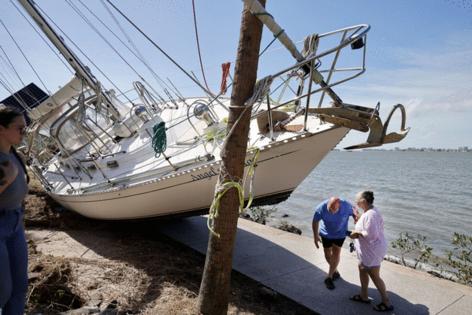Above-average hurricane season, US landfall chances in CSU forecast
Published in News & Features
The first hurricane forecast of the year from the experts at Colorado State University released Thursday calls for an above-average season with nine hurricanes and a better than 50% chance a major hurricane will strike the U.S.
The CSU seasonal forecasts were originated by the late William Gray in 1984, but continue out of the school’s Department of Atmospheric Science, and are considered in meteorological circles as among the most accurate in predicting tropical activity.
For 2025, forecasters point to warmer than normal waters in the eastern subtropical Atlantic Ocean and Caribbean has harbingers of another active season similar to 2024.
Also feeding a potentially busy hurricane season is the low chance of El Niño conditions in the equatorial Pacific by the height of hurricane season from mid-August to October, which translates to less chance of wind shear in the Atlantic. No wind shear means greater chance storms won’t lose steam as they plow toward targets in the Caribbean, Gulf Coast and U.S. East Coast.
For those reasons, CSU forecasters expect 17 named storms, of which nine will become hurricanes. Of those, four are predicted to reach major hurricane strength.
That’s slightly lower than what 2024 saw with 18 named storms, 11 of which became hurricanes, with five of those becoming major storms of Category 3 strength or stronger.
Those included hurricanes Debby, Helene and Milton, all of which struck Florida’s Gulf Coast. Helene and Milton combined to cause more than 250 fatalities and more than $120 billion dollars in damage in the U.S.
The 30-year average from 1991-2020 saw 14.4 named storms, 7.2 hurricanes and 3.2 major hurricanes.
The report also predicted landfall probabilities. It called for a 51% chance a major hurricane will strike the U.S. coastline noting the average from 1880-2020 is 43%.
The chances a major hurricane will hit the U.S. East Coast including the Florida peninsula is 26%. The chances it would hit the U.S. Gulf Coast from the Florida panhandle to the Texas-Mexico border is 33%. The chances one would hit the Caribbean is 56%.
“It takes only one storm near you to make this an active season for you,” said coauthor of the forecast Michael Bell.
Phil Klotzbach, a senior research scientist and lead author of CSU’s forecast said the year looks similar to what he calls “analog seasons” seen in 1996, 1999, 2006, 2008, 2011 and 2017.
“Our analog seasons ranged from having slightly below-average Atlantic hurricane activity to being hyperactive,” said Klotzbach. “While the average of our analog seasons was above normal, the large spread in observed activity in our analog years highlights the high levels of uncertainty that typically are associated with our early April outlook.”
The forecasts follows predictions released last month by AccuWeather that predicted up to six systems to impact the U.S. The National Oceanic and Atmospheric Administration won’t release its season prediction until May.
CSU will update its forecast on June 11, July 9 and Aug. 6.
The Atlantic hurricane season runs from June 1-Nov. 30.
---------------
©2025 Orlando Sentinel. Visit at orlandosentinel.com. Distributed by Tribune Content Agency, LLC.







Comments